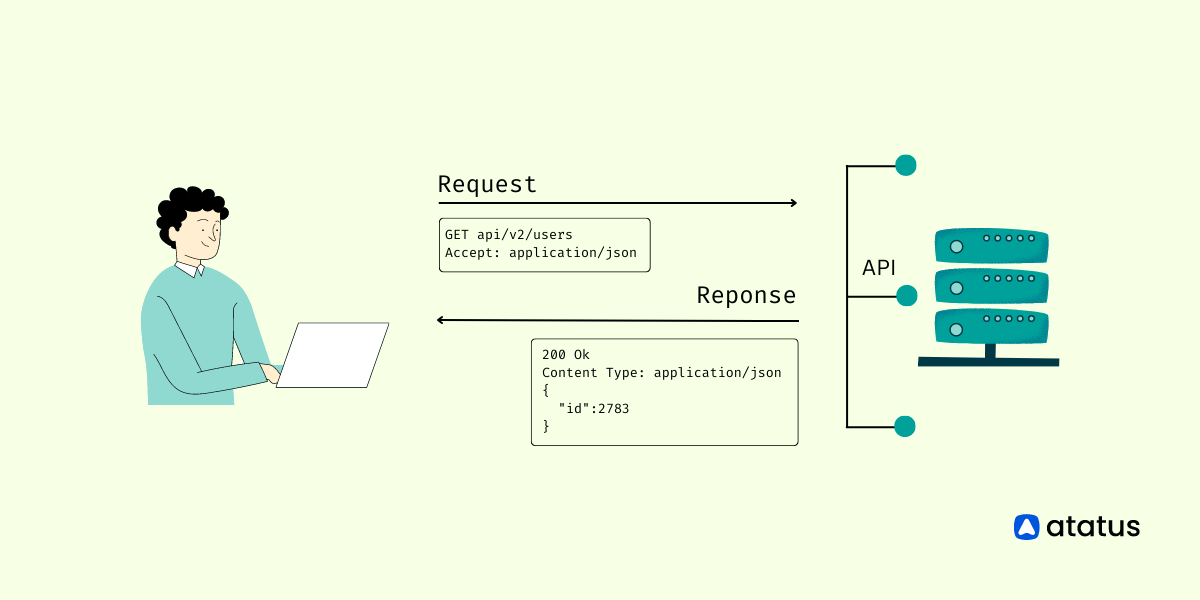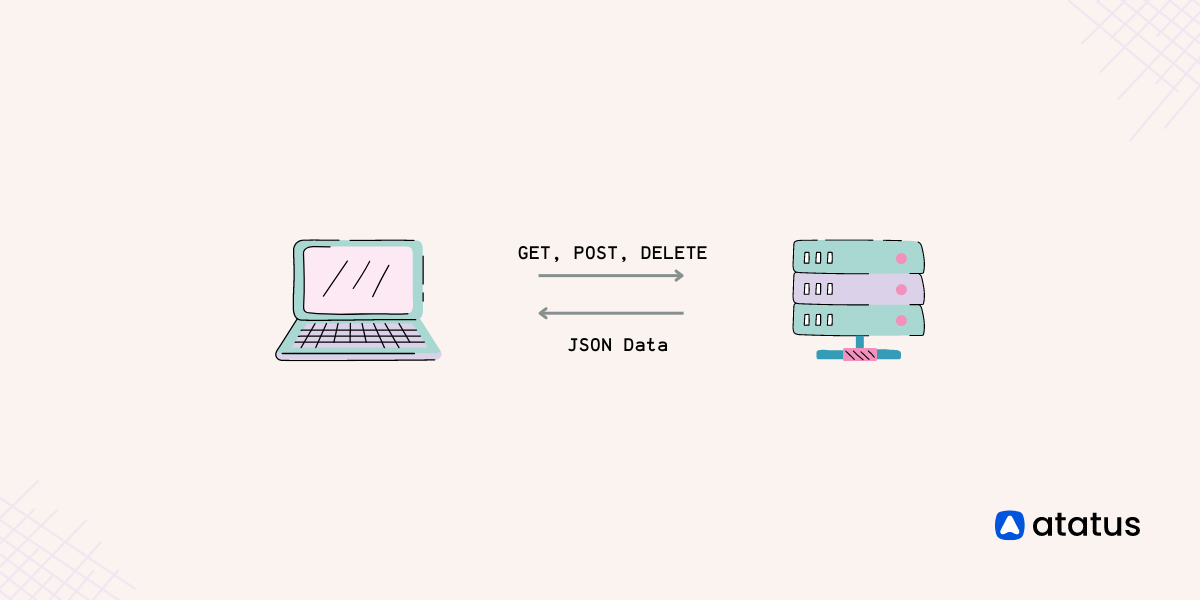A Beginner's Guide to API Data Formats: JSON, XML, Plain Text, and Binary
Imagine you are sending a message to your friend, but you want to ensure that no one else can understand it. So lets say you are encoding your message using a special language that only you and your friend knows. This way, even if someone intercepts the message, they won't be able to understand its true meaning. The encoded message itself is what we call the "payload."
In the world of APIs (Application Programming Interfaces), the concept of a payload is quite similar. When you interact with an API, you're essentially sending and receiving data, just like your secret message.
Remember that the payload is the essential part of your data, carrying the meaningful information you want to send or receive. Understanding the concept of payloads allows us to grasp the significance of the data being transmitted, much like the key elements of a conversation.
Are you excited to know more about API payload? Well, wait no longer! Let's get started!
- What is a Payload in API?
- API Payload Example in Node.js
- Different Formats for API Payloads
- Handling API Payloads
What is a Payload in API?
In the context of APIs (Application Programming Interfaces), the term "payload" refers to the fundamental data or content exchanged between the client and the server as part of an API call. It encompasses the crucial information that is being sent or received, enclosed within the API request or response.
Understanding the payload structure and correctly handling the data within it, is crucial for seamless integration with external APIs.
API Payload Simple Example
When data is transmitted over the internet, it is composed of two components: overhead and payload. The overhead contains information that helps identify the source and destination of the payload. However, once the data reaches its intended recipient, the overhead information is typically discarded, and only the payload remains visible and accessible.
Imagine you are building an e-commerce application that interacts with an external payment gateway API to process transactions. When a user initiates a purchase, your application sends a request to the payment gateway API with a payload containing relevant transaction details. The core data being sent or received can be transmitted in various formats, with JSON and XML being common examples. Let's consider a simplified JSON payload example:
{
"amount": 49.99,
"currency": "USD",
"orderId": "ABC123",
"customer": {
"name": "John Doe",
"email": "johndoe@example.com"
}
}
In this scenario, the payload includes the necessary information to process a transaction. It specifies the amount (49.99 USD), the currency, the order ID, and customer details such as name and email. The API server responsible for payment processing receives and interprets this payload to carry out the transaction, charging the specified amount to the provided customer's payment method.
On the server side, once the payment gateway processes the transaction, it generates a response containing relevant information. The response payload may include details like transaction status, transaction ID, and any additional data returned by the payment gateway.
Learn about the essential API metrics that contribute to enhancing the end-user experience on our blog - Top API Metrics for Different Teams That You Should Monitor
API Payload Example in Node.js
Here's an example of handling API payloads in Node.js:
const express = require('express');
const app = express();
app.use(express.json()); // Parse JSON payloads
app.use(express.urlencoded({ extended: true })); // Parse URL-encoded payloads
// POST endpoint to handle incoming API payloads
app.post('/api/payload', (req, res) => {
const payload = req.body; // Access the payload from the request body
// Process the payload or perform desired actions
// ...
// Return a response payload
const responsePayload = {
message: 'Payload received and processed successfully',
data: payload,
};
res.json(responsePayload);
});
// Start the server
app.listen(3000, () => {
console.log('Server is running on port 3000');
});In this example, we're using the Express.js framework to create an API endpoint that handles incoming API payloads. The express.json() middleware is used to parse JSON payloads, while express.urlencoded() middleware is used to parse URL-encoded payloads.
The /api/payload endpoint is set up as a POST route. When a client sends a POST request to this endpoint with a payload, the payload data is accessed from the req.body object. You can then process the payload or perform any necessary actions based on the payload data.
In the example, we simply create a response payload containing a success message and the received payload data. The response payload is sent back to the client using the res.json() method.
You can customize the payload processing logic according to your specific requirements within the POST route handler.
Different Formats for API Payloads
Imagine you're sending a gift to a friend. The gift itself represents the payload, which is the main content you want to share. However, before you hand it over, you need to put it in a box and attach a label for identification. The box and label together represent the payload format.
API payloads consist of two main components: the request payload and the response payload.
- Request Payload: When a client makes an API call, the request payload contains the data sent from the client to the server. It includes various elements such as parameters, headers, authentication tokens, and the actual data payload. The request payload communicates the client's intentions and provides the necessary information for the server to process the request effectively. It serves as a means of conveying the required data to perform the desired action.
- Response Payload: Upon receiving and processing the client's request, the server sends back a response payload to the client. The response payload carries essential elements such as the requested data, any error messages encountered during processing, status codes indicating the success or failure of the request, and additional metadata. The response payload allows the client application to interpret and utilize the received data appropriately. It serves as the means of conveying the server's response to the client's request.
Now, let's take a look at different payload formats commonly used in APIs:
1. JSON (JavaScript Object Notation)
JSON is a popular format for sending data because it's easy to read and understand for both humans and computers. Just like putting different items in a gift box, you can organize data in JSON by using key-value pairs. For example:
{
"name": "John",
"age": 25,
"city": "New York"
}
In this JSON payload, the keys ("name", "age", "city") represent the labels, and the corresponding values ("John", 25, "New York") represent the actual data being transmitted.
Scenario: Sending and receiving structured data between a client and server application. JSON is widely used for APIs due to its simplicity, ease of parsing, and readability.
// Using Express.js - a popular web framework for Node.js
const express = require('express');
const app = express();
const bodyParser = require('body-parser');
app.use(bodyParser.json());
// API endpoint to receive JSON data and respond with JSON
app.post('/process_data', (req, res) => {
const data = req.body; // Get JSON payload from the request
// Process the data and prepare the response
const result = { message: 'Data processed successfully', processed_data: data };
res.json(result);
});
const port = 3000;
app.listen(port, () => {
console.log(`Server started on http://localhost:${port}`);
});Reasons to choose JSON:
- JSON is lightweight and easy to read, making it human-readable and developer-friendly.
- Most modern programming languages, including Node.js, have built-in support for parsing JSON data.
- JSON supports nested data structures, making it suitable for representing complex objects.
2. XML (eXtensible Markup Language)
XML is more structured format where data is enclosed within opening and closing tags. For example:
<person>
<name>John</name>
<age>25</age>
<city>New York</city>
</person>
Here, the tags act as labels and help organize the data. The data is placed between the opening and closing tags, indicating the information being sent or received.
Scenario: Integrating with legacy systems that require XML-based data exchange. XML is commonly used in enterprise systems and has strong support in various industries.
// Using Express.js and xml2js library for XML parsing
const express = require('express');
const app = express();
const xml2js = require('xml2js');
app.use(express.text({ type: 'text/xml' }));
// API endpoint to receive XML data and respond with XML
app.post('/process_data', (req, res) => {
const xmlData = req.body; // Get raw XML data from the request
// Parse XML to a JavaScript object
xml2js.parseString(xmlData, (err, result) => {
if (err) {
console.error('Error parsing XML:', err);
return res.status(500).send('Error processing XML data');
}
const data = result; // Access the parsed data as a JavaScript object
// Process the data and prepare the response
const xmlResponse = `<response><message>Data processed successfully</message></response>`;
res.type('text/xml').send(xmlResponse);
});
});
const port = 3000;
app.listen(port, () => {
console.log(`Server started on http://localhost:${port}`);
});
Reasons to choose XML:
- XML has a well-defined structure with tags, making it suitable for complex and hierarchical data.
- Some legacy systems and enterprise applications might still rely on XML for data exchange.
- XML supports data typing, which can be useful when strict data validation is required.
3. Plain Text
Plain text is like a gift without any fancy packaging. It's a simple format where data is presented as is, without any specific structure or additional labelling. For example:
John, 25, New York
In this case, the payload consists of plain text, where each piece of information is separated by a delimiter (comma in this case).
Scenario: Sending simple text data between a client and server. Plain text is used when there's a need for direct and straightforward communication.
// Using Express.js
const express = require('express');
const app = express();
// API endpoint to receive plain text data and respond with plain text
app.post('/process_data', (req, res) => {
const textData = req.body; // Get plain text payload from the request
// Process the data and prepare the response
const responseText = 'Data processed successfully';
res.send(responseText);
});
const port = 3000;
app.listen(port, () => {
console.log(`Server started on http://localhost:${port}`);
});Reasons to choose plain text:
- When the data to be exchanged is simple and does not require any complex data structures.
- Plain text is lightweight and can be easily consumed by any system, making it ideal for simple communication.
4. Binary / Base64
In API payloads, binary data such as images, files, or any non-textual information needs to be transmitted as text-based data for compatibility reasons. Binary data cannot be directly sent in the request body, so it is encoded into a text format like Base64.
Base64 is a method to encode binary data into an ASCII string format, which consists of alphanumeric characters and a few special characters. It is widely used because it is safe for transmission in various systems that might not handle binary data correctly.
Here's an example in Node.js on how to encode and decode binary data using Base64:
// Example using Node.js built-in 'fs' module for file handling
const fs = require('fs');
// Read binary data (e.g., an image file) into a buffer
const filePath = 'path/to/image.jpg';
const binaryData = fs.readFileSync(filePath);
// Encode the binary data to Base64
const base64Data = binaryData.toString('base64');
console.log('Base64 Encoded Data:');
console.log(base64Data);
// Decoding the Base64 data back to binary
const decodedBinaryData = Buffer.from(base64Data, 'base64');
// Verify if the decoded binary data matches the original binary data
console.log('Is Decoded Data Equal to Original Data?');
console.log(decodedBinaryData.equals(binaryData));
Reasons to choose binary:
- Binary data is efficient for transferring non-textual data like images, videos, audio, etc.
- Some file formats (e.g., images) are inherently binary and cannot be represented directly in text-based formats like JSON or XML.
Handling API Payloads
Handling API payloads during communication involves specific protocols and techniques to facilitate effective data exchange between the client and server. API frameworks and libraries play a vital role in parsing and validating API payloads.
- Review API Documentation: Understand the payload structure, supported data format, and required/optional fields from the API documentation.
- Serialization and Deserialization: Convert data objects to API-compatible formats (serialization) and vice versa (deserialization) using libraries or built-in functions.
- Payload Validation: Validate payloads to ensure required fields are present and data matches the expected format to prevent errors.
- Error Handling: Account for error handling to gracefully handle invalid payloads or other issues and provide appropriate feedback.
- Data Transformation: Be prepared to transform or manipulate payload data before sending or after receiving it, if needed.
- Security: Encrypt payload data during transmission using HTTPS, and avoid sending unnecessary or sensitive information.
- Optimize Payload Size: Minimize payload size to improve API response times and reduce bandwidth usage.
- Binary Data Handling: Properly handle binary data by encoding/decoding it, such as using Base64 for transmission.
- Testing: Thoroughly test API payload handling with various scenarios, including edge cases and errors.
- API Versioning: Support API versioning to accommodate future API changes without breaking functionality.
Conclusion
Understanding the concept and functionality of an API payload is vital for both developers and businesses relying on APIs to exchange data and integrate applications.
The payload, which constitutes the actual transmitted data between client and server, can assume different formats like JSON, XML, or binary data. Hence, it is crucial to accurately define the payload structure and format, validate the data, and effectively handle any potential errors or exceptions.
By adhering to these practices, we can ensure secure, efficient, and dependable API communication, enabling seamless interaction between applications and delivering value to users.
Monitor API Payloads with API Analytics
API Analytics provides deep insights into the data being exchanged between clients and servers. It allow developers and businesses to gain visibility into the content and characteristics of API payloads, enabling them to analyze, track, and optimize API performance and usage.

Analyzing API payloads provides valuable insights into how your APIs are being used by consumers. You can gain visibility into the most frequently requested data, popular payload formats, and usage patterns.
You can also identify performance bottlenecks, such as large payloads or slow response times, that can impact the overall API performance. Analytics can help pinpoint areas for optimization, enabling you to streamline payload sizes, reduce latency, and improve API efficiency.
#1 Solution for Logs, Traces & Metrics
APM
Kubernetes
Logs
Synthetics
RUM
Serverless
Security
More





